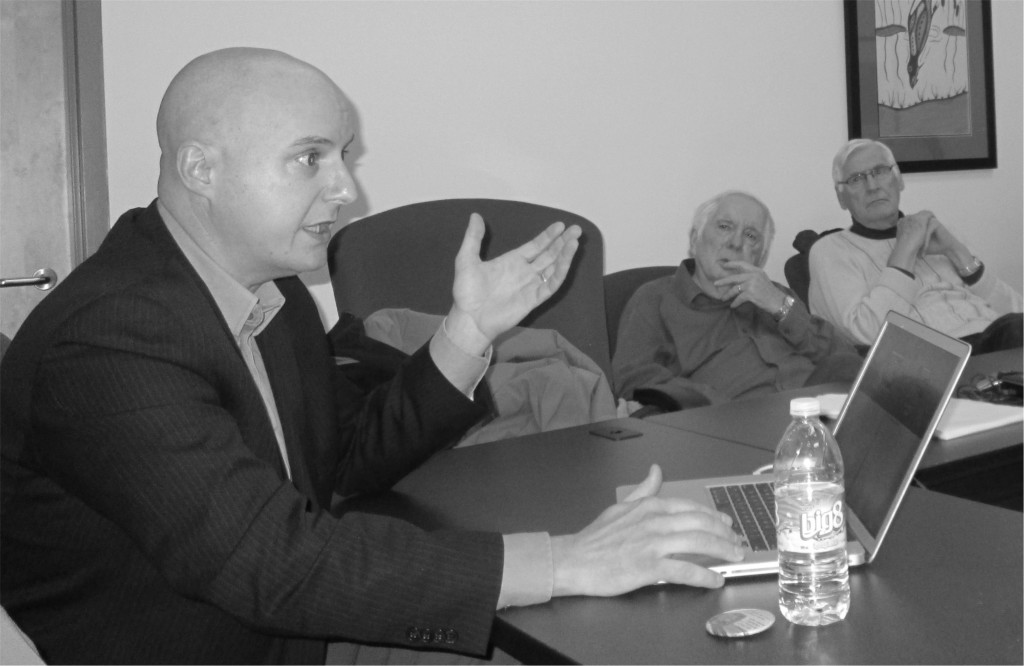Can we afford to subsidize public and active transportation? Can we afford not to? Our car dependent culture is costing us more than we think, argues a recent report by the University of New Brunswick’s Urban and Communities Studies Institute.
“The problem is our decision makers do not cost all forms of transportation, even though they are all subsidized,” says Yves Bourgeois, a co-author of the report. They cite a 2008 Transport Canada report that calculated private vehicle drivers only pay for 75% of inter-city car travel costs, whereas rail and bus users pay 96% and 95%, respectively. Once you factor in congestion, policing, accident-related healthcare costs, GHG emissions, etc, cars are costlier to governments than they appear.
“If we could shave just 5% off what New Brunswick spends on accident-related healthcare costs, that’s an additional $20 million governments could spend on more sustainable transportation,” says Bourgeois. This boosts the case for public transit, as well as investing in community-based shared transportation networks across many of our region’s more rural towns and villages.

Arguments that improve environmental and economic sustainability may appear no-brainers, but Bourgeois raises three important governance challenges. First, even if sustainable transportation could save provincial governments tens if not hundreds of millions of dollars, public transit is left to municipal governments who underinvest because they only reap part of the benefits. The costs and benefits accrue to the same taxpayer, but provincial-municipal governments do not always disentangle responsibilities well.
The second governance challenge owes to regional-level planning. PEI and NB “lead” the country with the highest percentages of workers residing in one community and working in another. That puts stress not only on the road system, but also on things like parking and policing, paid for by one municipality’s taxpayers but shared by others.
The third challenge highlights the intricate link between transportation and the built environment, and suggests departments within the same government may not work well together. A provincial education or health department may decide to site a new school or hospital in a suburb to save on land acquisition costs. They may not have factored in increased busing costs, and they are even less likely to have factored in the costs of roads and increased traffic to that area, water and sewer line costs to the municipality, etc. How we design property developments can also make a big difference in the viability of transportation alternatives, but this implies coordination between a town’s planning, administrative and elected bodies.
By not addressing these governance challenges today, we reinforce our dependence on private vehicles and the underestimated costs they bring to households, governments and society. The report also shows the extent of our car dependence and discusses the impact this has on our ability to tackle other social priorities like poverty reduction, economic development and immigration retention.
- 90% of NBers commute by car compared to the national average of 79%. Only 55% of recent immigrants rely on cars, which can make retention difficult where transportation alternatives are rare;
- NBers have the 3rd highest car ownership rate in Canada (1.55 per household); they drive an average 800km a year more and produce 9.4% more CO2 from car use;
- 12.7% of Canadians use mass transit, but only 2.2% in New Brunswick: 4.9% in Saint John, 3.4% in Moncton and 2.7% in Fredericton;
- NBers walk (5.7% vs 6.2%) and bike (0.5% vs 1.4%) to work less;
- Canadians estimate at $4500 the annual cost of operating a private vehicle, but the CAA calculates at $10,500 the real costs for a compact car. It takes approximately $6/hour off someone’s take-home pay to keep a car on the road. The cost of working may be too high for low-income earners if alternatives to cars are unavailable;
- NBers spend 19% of their budget on transportation compared to 15% for Canadians. Lower-income NBers spend 17% vs. 12% for low-income Canadians.
The report can be accessed free of charge from www.unb.ca/urban.





